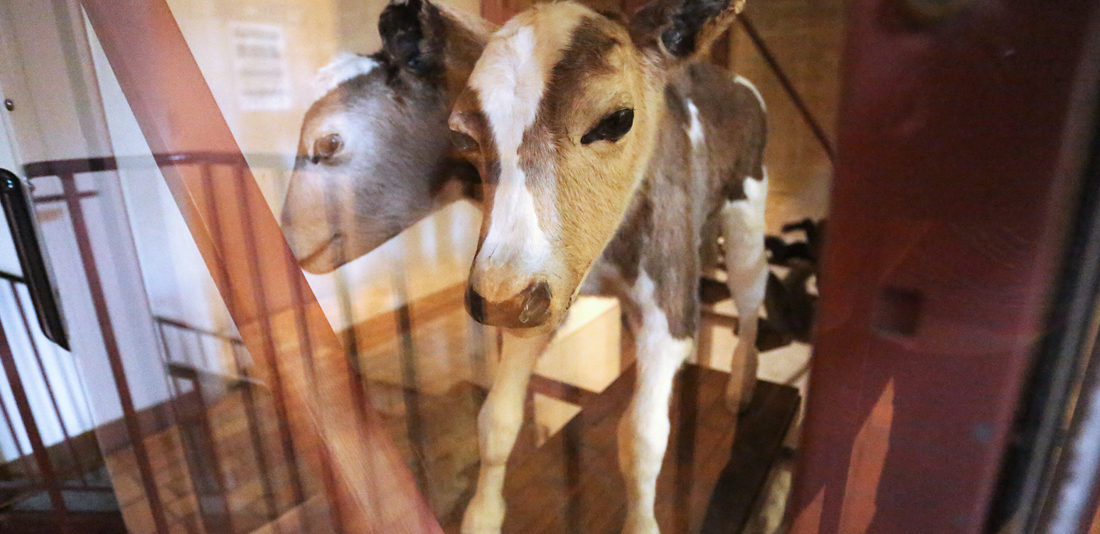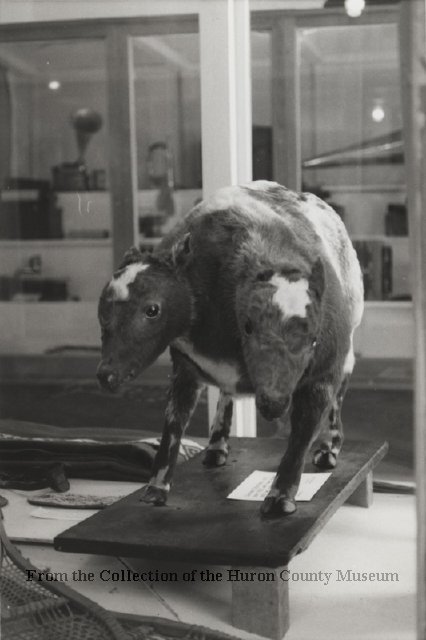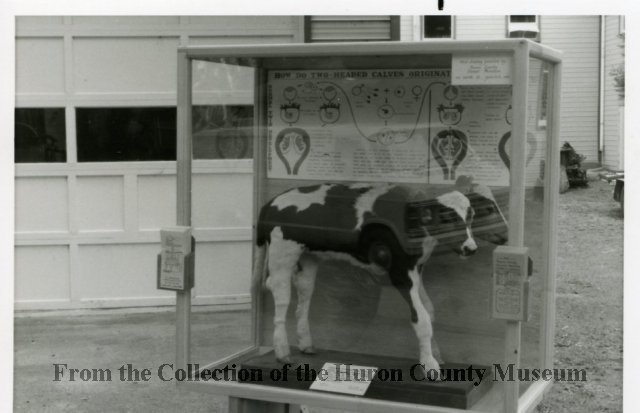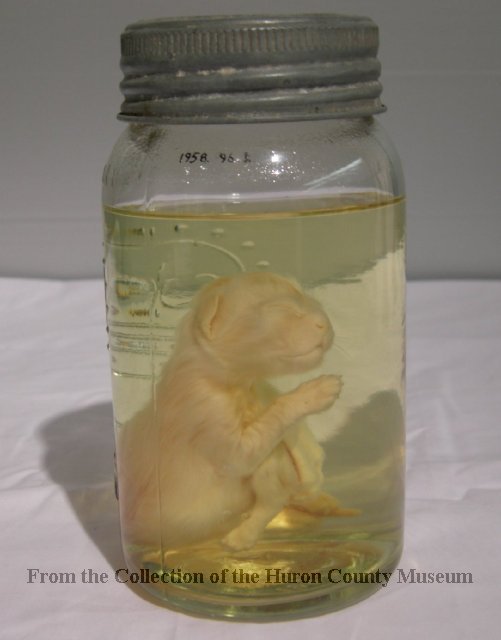Did you know that the Museum has two two-headed calves in our collection? Since the Museum’s earliest days these calves have been a crowd pleasing favourite among visitors – which one do you favour?
The first calf, a female, was born on the farm of William McFadzean, near Walton in 1925 with two heads, two tails, two hearts, two spinal cords and four legs. During birth one of the necks was broken and the calf died shortly after and was buried. Richard Hoy, owner of the store, restaurant, and butcher shop in Walton was also a taxidermist. When he heard the news, he exhumed the calf and preserved it.
M959.0226.001
The second, a male Friesian Holstein calf, was born with two heads, two tails and one set of organs in 1936 on William Long’s farm in Colborne Township. Dr. Meyers of Goderich was the veteranarian. The calf was mounted by a taxidermist from Toronto.
Excerpt from a newspaper clipping in 1936 (newspaper unknown):
“A freak Holstein calf was born on the farm of Mr. William Long, but lived only for a short while. The calf had two heads and two tails. About once in 2500 births there is a calf with two heads, but the veteranarian in attendance had never experienced the birth of a calf with two heads and two tails. Life was noticed in one of the heads for a few minutes, and the body of the calf was quite normal in that it had only four legs, one body, and one set of organs. Mr. Long is thinking of sending the body to a taxidermist to have it mounted.”
M966.114.001
If two headed calves aren’t your thing, how about an 8 legged kitten? This creepy cat (a staff favourite artifact) was born with eight legs and stored in a jar filled with formaldehyde solution.
M958.0096.001
Find even more fascinating artifacts in the Museum’s On-line Collection!




